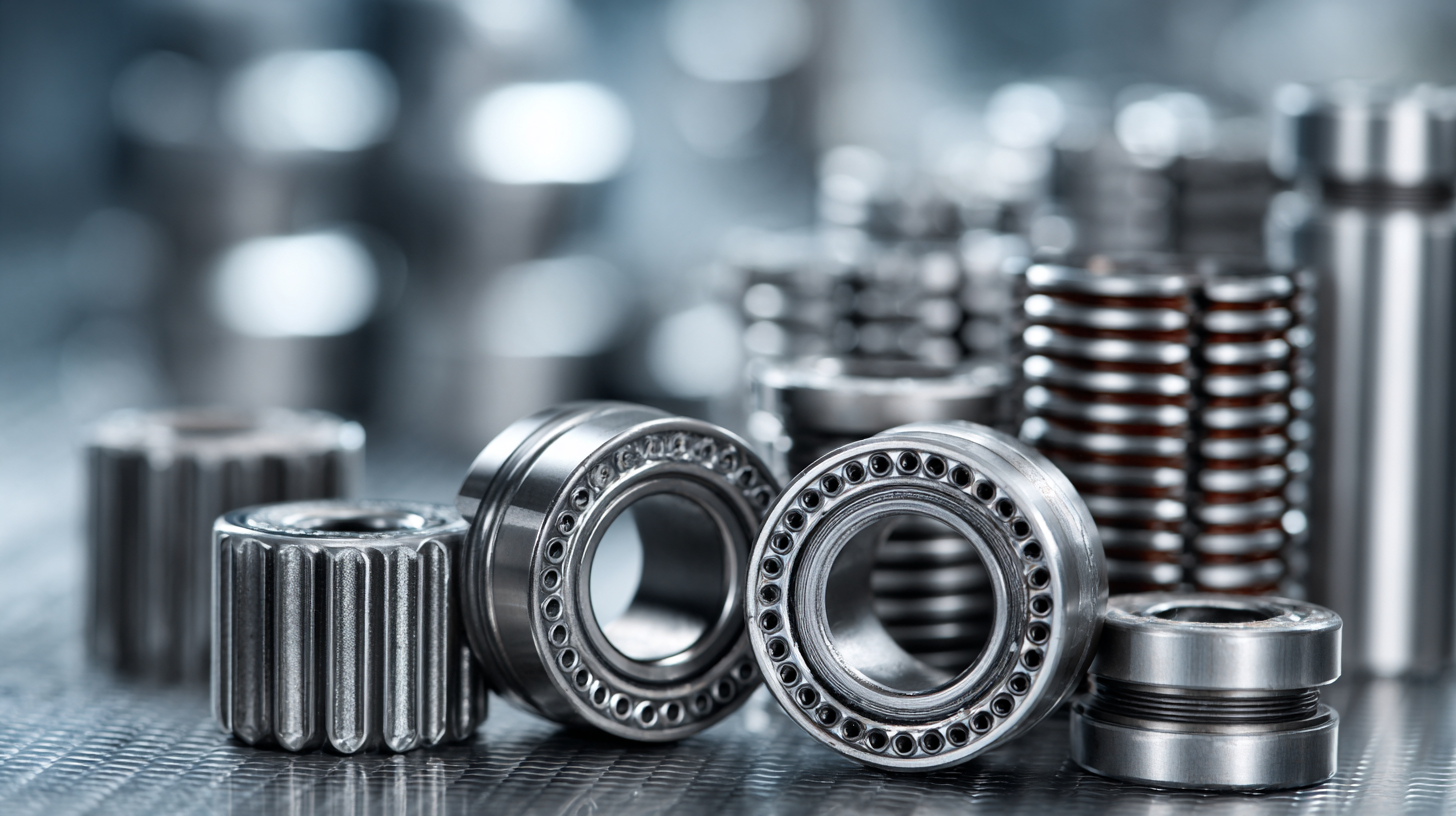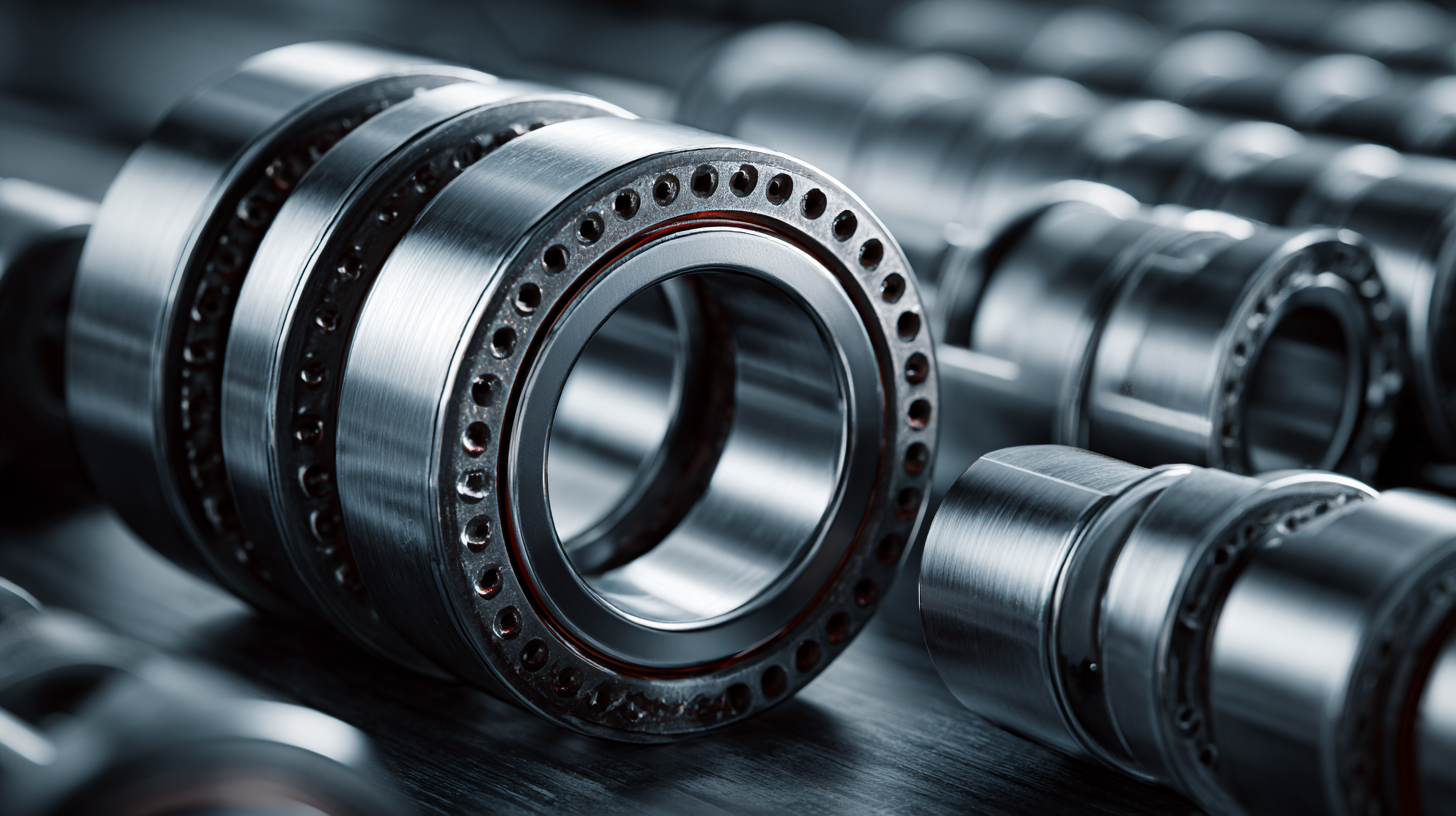How to Select the Right Needle Roller Bearings for Optimal Machine Performance
In the world of mechanical engineering, the selection of appropriate components is crucial for ensuring optimal machine performance, with
needle roller bearings being a cornerstone in the design of various machinery.
According to a recent market analysis report by MarketsandMarkets, the global needle roller
bearing market is projected to reach $9.5 billion by 2025, driven by their
efficiency in reducing friction and enhancing load capacity in compact spaces. These bearings, pivotal in applications ranging from
automotive to industrial equipment, require careful
consideration based on factors such as load ratings, environmental conditions, and installation practices. As industries increasingly
seek ways to boost productivity and reliability, understanding how to select the right needle roller bearings becomes an essential
element for engineers and manufacturers aiming for excellence in machine performance.
Understanding the Basics of Needle Roller Bearings and Their Applications
Needle roller bearings are a critical component in various machinery, designed to support heavy loads while maintaining compact dimensions. Understanding their construction and functionality is essential for industries that rely on high-performance equipment. These bearings feature long, thin rolling elements that distribute loads evenly, making them suitable for applications where space is at a premium. Common applications include automotive transmissions, agricultural machinery, and industrial equipment, where reliability and precision are paramount.
**Tips:** When selecting needle roller bearings, consider factors such as load capacity, operating temperature, and lubrication requirements. Ensuring the bearing material is compatible with the application's environmental conditions can significantly enhance performance and durability. Additionally, the right size and fit are crucial; improper fitting can lead to increased wear and potential machine failure.
Proper installation and maintenance are essential for the longevity of needle roller bearings. Regular inspections can help detect wear or misalignment early, allowing for timely corrective actions. **Tips:** Always refer to the manufacturer's guidelines for installation procedures and lubrication intervals. Utilizing the correct tools during installation can also prevent damage to the bearings, ensuring optimal machine performance in the long run.

Key Factors to Consider When Selecting Needle Roller Bearings
When selecting needle roller bearings, several key factors must be considered to ensure optimal performance in machinery. One of the foremost considerations is the load capacity of the bearings. It’s essential to match the bearing's capacity with the expected loads in your application, keeping in mind both static and dynamic loads. Overloading can lead to premature failure, while underloading can affect efficiency. Therefore, understanding the specific load conditions is vital for effective bearing selection.
Another critical factor is the bearing's environment. Needle roller bearings are exposed to various conditions, such as temperature extremes, humidity, and potential contaminants. Selecting bearings with materials and seals suited to the operating environment can significantly enhance durability and reliability. Additionally, the bearing's lubrication method should be tailored to the application, as this can impact friction, wear, and overall operational longevity. Considering these aspects will not only boost machine efficiency but also prolong the lifespan of the bearings in use.
The Importance of Load Capacity in Needle Roller Bearings Selection
When selecting needle roller bearings, understanding load capacity is paramount to ensuring optimal machine performance. Load capacity refers to the maximum load a bearing can safely support without risk of failure, and it's influenced by various factors such as material, design, and operating conditions. According to a report by the American Bearing Manufacturers Association (ABMA), choosing a bearing with insufficient load capacity can lead to premature failure and increased maintenance costs, underscoring the importance of accurate selection based on application-specific requirements.
A study published in the Journal of Mechanical Science and Technology reveals that the load capacity of needle roller bearings can vary significantly depending on the application. For instance, standard bearings typically have a dynamic load rating ranging from 2,000 to 25,000 N, depending on their size and configuration. However, in high-stress environments, such as automotive or aerospace applications, utilizing bearings with higher load capacities—such as those made with advanced materials like ceramic composites—can provide additional safety margins and enhance reliability. Thus, engineers must assess both static and dynamic load conditions meticulously to ensure that the selected needle roller bearings not only meet but exceed the operational demands of their specific machinery.
Material Choices: Ensuring Durability and Performance in Needle Roller Bearings
When it comes to selecting needle roller bearings for machinery, the choice of materials is crucial for ensuring durability and performance. Needle roller bearings are typically subject to significant loads and environmental stresses, making material selection a key factor in their longevity. High-quality steel alloys, such as chromium or carbon steel, are often preferred due to their superior strength and resistance to wear. These materials not only enhance the load-bearing capability of the bearings but also minimize the risk of early failure that can disrupt machine operations.
In addition to steel, alternative materials like ceramic or polymer composites are gaining popularity in specific applications. Ceramic materials offer excellent hardness and low friction, making them suitable for high-speed applications or environments with extreme temperatures. On the other hand, polymer composites can provide lightweight solutions with excellent corrosion resistance, ideal for applications in harsh chemical environments. By carefully considering these material options, machine designers can optimize bearing performance, leading to increased reliability and efficiency in their systems.

Maintenance Tips for Prolonging the Life of Needle Roller Bearings
Needle roller bearings are essential components in various machinery, providing support while minimizing friction and wear. To ensure their longevity and optimal performance, regular maintenance practices are crucial. According to a report by the American Bearing Manufacturers Association (ABMA), approximately 40% of bearing failures can be attributed to inadequate lubrication and contamination. Therefore, implementing a robust maintenance routine that includes periodic inspections and lubrication can significantly extend the service life of needle roller bearings.
One effective maintenance tip is to monitor operating conditions regularly. As stated in the "Bearing Life and Operating Temperatures" report by the International Organization for Standardization (ISO), excessive temperatures can dramatically decrease bearing lifespan. Keeping operating temperatures within specified limits is critical; ideally, they should remain below 70°C (158°F). Furthermore, regular cleaning of the bearing and its housing can help prevent debris accumulation, which can lead to premature failure. By adhering to these practices and leveraging industry guidelines, machine operators can enhance the reliability and durability of needle roller bearings in their applications.